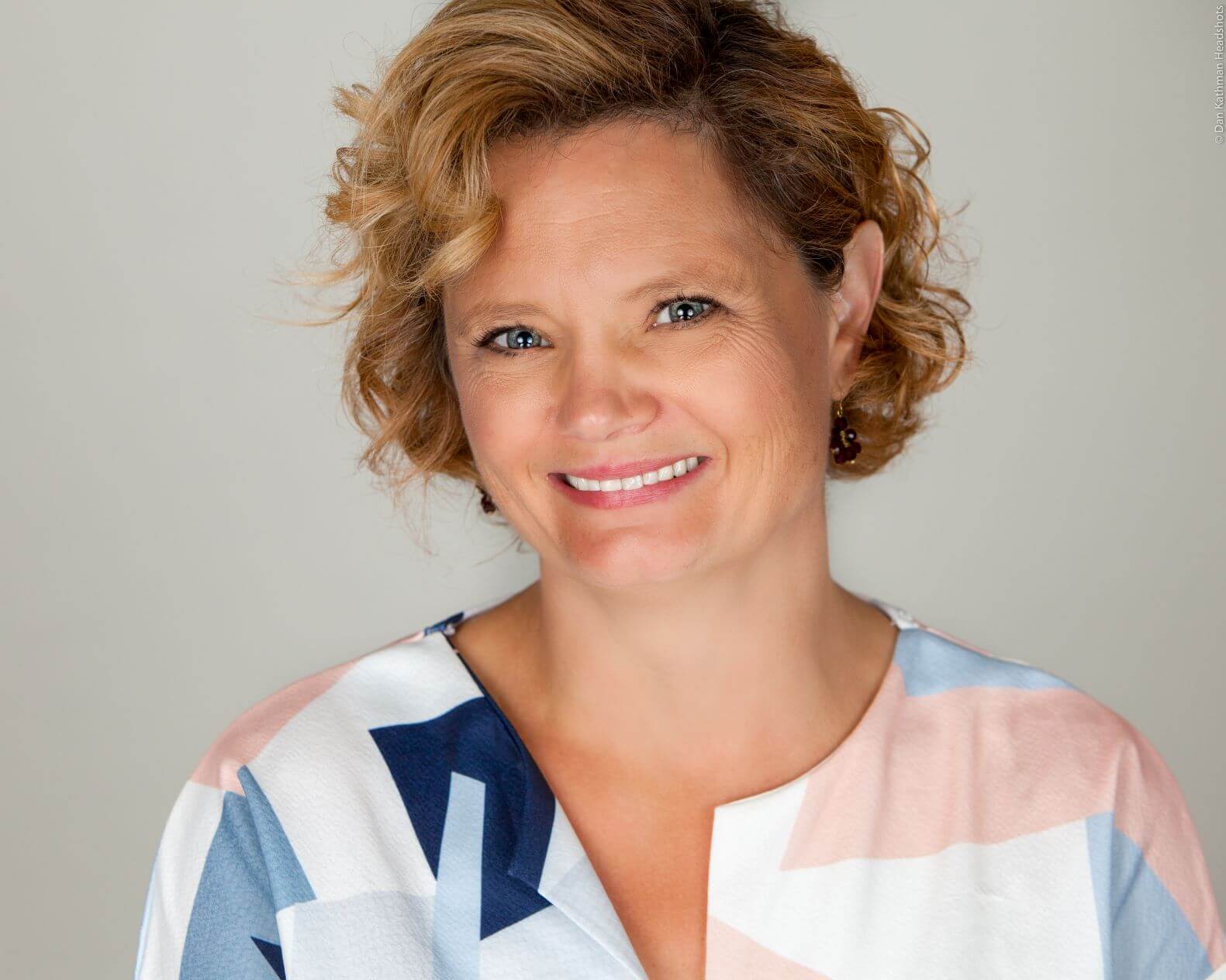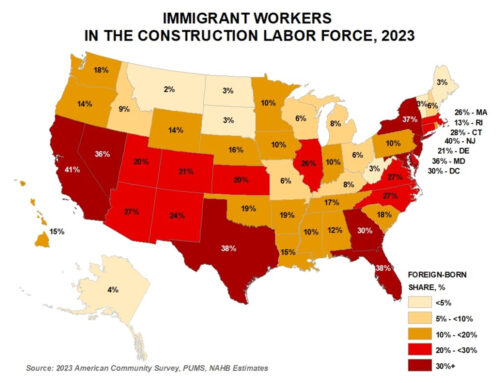There is a Difference Featuring Erika Egede-Nissen
November 8, 2021
Erika Egede-Nissen impresses us with her eye for design in all that she does as a marketing leader in the home and building marketplaces. Her unique perspective brings a beauty and simplicity to her work. Erika demonstrates There is a Difference. Let us show you.
Hi, my name is Erika Egede-Nissen. I am a marketing director and specialize in built environments, building products and companies and services that supply to those industries. I am a native of California with Scandinavian roots, and I have an innate desire to protect our natural resources and honor the aesthetic that Mother Nature has provided. I like clean utilitarian and well designed and beautiful environments.
How does design make a difference in our lives at work and home?
For me, design makes a difference at work and at home when you barely even notice it. So when you get a new product and you wonder, how did I ever live without this? Or you don’t even notice that it’s integrated into your life. Something as simple as a beautifully shaped knife or a beautiful paring knife that enables you to get dinner to the table faster, enables you to enjoy that bit of cooking more. Those are the things about design and environments that I appreciate is, when something feels a part of my life that has always been there. And I just didn’t notice that it was new.
How will home and building design be impacted by our experience with the pandemic?
Coming out of 18 months of working at home and having a youngster going to school at home, I believe that we as humans are going to start taking advantage of, or already have taken advantage of all the nooks and crannies that our home offers. We’re going to look at our yards and think, how can I entertain more outside? How can I engage with my family more outside? How can I invite more people over and celebrate that throughout my home?
We’re also looking at support of our elders and making sure that we have space to incorporate our elders into our home. I think my Gen X generation is going to be faced with taking care of our parents and ensuring that they have a safe place to be. And through COVID we may think maybe a nursing home isn’t quite it, right. Because I want to ensure that I can always celebrate with my folks and that’ll always be able to go see them and give them a hug. And I think that in taking care of the generation that came before us is something that we’re going come out of the pandemic with, and we’re going to look to solve within our own homes. And how can we make that better and easier for everybody?
Some we’ve already started to see master bedrooms on the main floor, things of that nature. Maybe we need two instead of one so that we can accommodate our folks as they get a little bit older.
I also think we’ll look to improve technology. So does our home have the same bandwidth that we’re able to experience at work? Do I need a small meeting space within my home so that I can easily invite my colleagues and my coworkers over to my house instead of saying, we have to meet in an office or we have to rent out a WeWork space. It may be more comfortable for us to just invite folks over and say, let’s meet at my house and let’s tackle this at home.
I think one area of improvement could be the whiteboard. I myself love a good whiteboard session, but boy, I do not want to see that hang on my wall at home. So, those out there who create whiteboards, I encourage you to create one that is a little bit more aesthetically pleasing or that rolls up or rolls down so that we can hide that, but still utilize that at our home and in our home space.
I think coming out of the pandemic, we’re taking advantage of those nooks and crannies within our home. And I think we’re going to look to taking care of the generations that came before us. And we’re also going to look to technology to support that work from home environment.
What role does design have an addressing the climate crisis?
I think design plays the ultimate role in the climate crisis. First and foremost is creating products that require less packaging and creating building places and environments that are smarter and support longevity. We also need to be focused on creating healthier environments and ensuring that we’re using all of that space. Earlier I kind of mentioned the nooks and crannies of our own homes. Well, do our offices do that? Are our offices using all of the nooks and crannies?
I work in an environment where there’s a large hallway between offices that are against the perimeter, but the interior sits completely empty. And it’s just excess space that we don’t really know what to do with. We could be installing cubicles, but is that the right thing to be doing? So I think that design needs to focus a little bit on less packaging and ensuring that we’re maximizing the use of space.
I also think design has going to need to play a bigger role in the supply chain. Are we ensuring that we are designing products and we’re designing spaces that can help decrease the way that we transport products and material? Can manufacturers look at setting up additional manufacturing facilities, or co-share manufacturing facilities that better support getting products to the consumer a little bit faster and decrease the amount of shipping and international shipping in particular.
What do you see for construction, architecture, and design 10 years from now?
When I saw this question, I got really excited because I think what we needed to be doing 10 years from now is a little bit around… And it goes back to the first question or the question you previously asked about climate and infrastructure. I think that if we are going to improve our climate and take care of our environment, we should be looking at our infrastructure and it’s in crisis and we have to be acting and thinking now on what is currently built and as designers, how can we make those better before we build new?
Do we need newer, bigger, better communities or can we improve what exists? Can we improve the transportation system that we have? Can we improve the service areas that our teams use and as products and services and spaces are designed now, we’re all responsible for asking ourselves, is there a more ethical or responsible way of building and creating this space?
I think in the ’90s we saw a lot of fast and various construction. We saw a lot of homes that are built that now just don’t stand the test of time. I myself have been a home that was built in 1927. It would take a lot to knock that house down. I am quite charmed by how quiet it is in my master bedroom because I can’t hear what’s going on in the living room and I appreciate that. This home is going to last a very long time.
I question are these master plan communities designing and building to support themselves a hundred years from now? Or are they designing and building for right now? And I think we have to improve what already exists and we have to look to build things that will promise our children’s generation, that they’re going to last a little bit longer.
Why are there so few women in the construction industry and what can we do to change this now and moving forward?
I think part of it is the educational system that we went through, where it was home economics and business, or I’m sorry, auto and technology. One was for girls and one was for boys, it was very clear. And I think that the education system has done away with both of those, which is a bit unfortunate rather than saying, how can we position these so that everyone can attend? And that there’s a little bit more gender equity in both of these.
But going forward. I think that organizations like ACE, which is architecture, construction and engineering, it is a mentor program that starts with children in high school and helps show them that there are career paths in architecture, in engineering and in construction. It’s open to many high school students. It is an area that I supported through a local high school in my community. It allowed me to get to students sooner to introduce them to the trades and the jobs and the college education that they could receive that sooner, rather than later. I think that organizations sponsoring students and awarding scholarships for students to go into these specific areas is very, very important.
I also think that sharing (the trades) sooner, meaning getting to kids who are in elementary school. We’re seeing a lot of programs that are built around STEAM and Academia, that’s around math and science. And I think it’s important that the construction industry and the design industry come together to show these students how these programs can translate later in life when they get a little bit bigger.
I think a lot of students forget about architecture or a lot of students forget about project management or creating within the built environment. And the STEAM programs or STEM programs that we’re seeing should be talking about construction, engineering, and architecture a little bit more.
These are programs that are meant for all students and are creating a little bit more gender equity in these programs. I think that the construction industry needs to do a bit of a better job of participating in the education that our students are receiving at an elementary and a high school level, because we can help these students understand that there’s more to come.
Also, I’ll say that my generation and the generation before, we need to do better as individuals. We need to mentor, we need to sponsor, we need to teach, we need to talk. We need to get out there and speak with young women across the United States, across the globe and share with them how careers are available and how they’ll make a difference in this industry and how they can influence the world around them. And I just think mentoring and sponsorship is a great way to do that.
What are your thoughts on the future of indoor-outdoor living?
When it comes to indoor-outdoor living, I am a lucky one. I live in Southern California and seasons are cool, cooler and warm, and hot, so I can enjoy my spaces year round. One area I think that we can look to improve is can we work outside? Can we teach our children outside? Can we take the classroom outside? I think with the impact of Zoom and having our children be educated on Zoom, it’s more important than ever for me now that my child is outside.
I appreciate the Green Team at my child’s school to ensure that trees are brought in, plants are brought in. That they’re able to experience butterflies and they’re able to experience cocooning and there’s able to see hummingbirds and bugs running around. So I think being outside teaches children a lot more than maybe we appreciated in the past.
With regards to our homes, I think it’s a matter of do I have an outdoor kitchen? Can I work out? Can I live outside a little bit more? I recently got to enjoy some homemade pizza with some friends and the pizza oven was outside and I just thought, oh, that’s a great spot. So we didn’t need to be in the home. The mini refrigerator and the pizza oven were both outside and everything was outside and we could all just enjoy each other’s company out there.
They’d also moved television out so that we could enjoy some sports. So those types of activities, I think are all things that folks are going to look for. I think the technology and the connectivity need to catch up. And I think right now service providers are probably charging a little bit more than they need to, but God bless them for getting lucky on that.
Thank you, Erika
We respect and appreciate people that have a unique perspective, insights, and experiences. Our series “There is a Difference” features people that see and do things differently to the betterment of all around them. Please let us know if you know of someone we should talk to as a part of the “There is a Difference” series. Send a note to Shawn@draperdna.com and we will be in touch.





